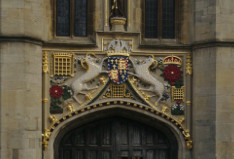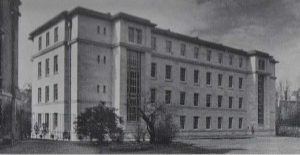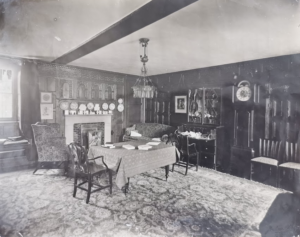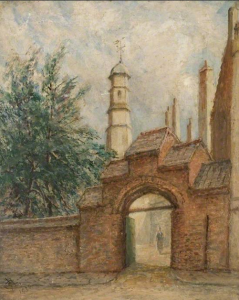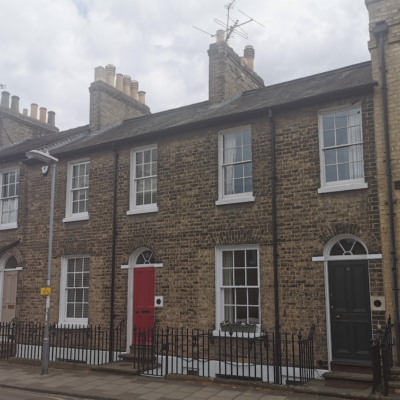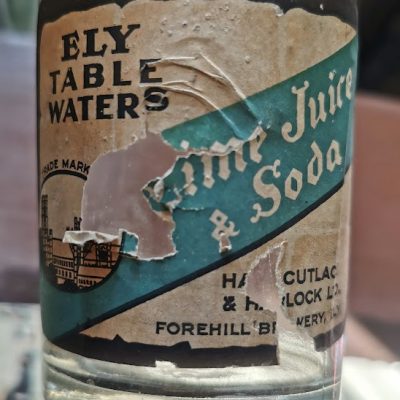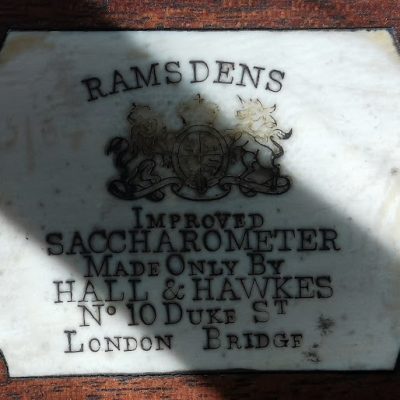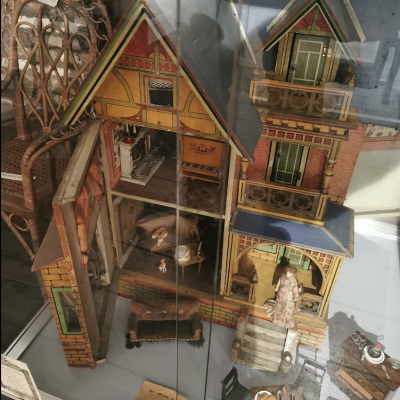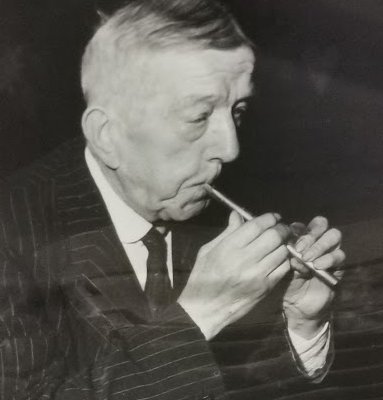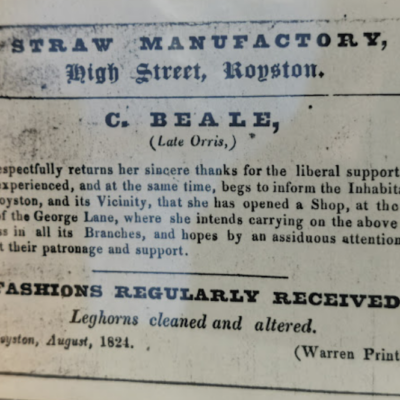Search by topic
- archaeology
- Building of Local Interest
- charity
- church
- crime
- dressmaker
- fire
- Great Eastern Railway
- Listed building
- Mapping Relief
- medieval
- oral history
- poverty
- Public House
- Rattee & Kett
- Religious House
- Roman
- scholar
- school
- Then and Now
- tudor
- women
- work
- world war one
- world war two
Search by text
 Christ's College Gate circa 1926/7 (Cambs Collection)
Christ's College Gate circa 1926/7 (Cambs Collection)Christ’s College
History of Christ's College
General historical information about the college can be found on Wikipedia.
F A Reeve, The Cambridge Nobody Knows, (1977), writes about the ‘yale’, the mythical animal resembling antelopes with faces like goats. These animals are also on the gateway of St John’s college.
New Court is a Building of Local Interest.
Chancellor Building was built in 1950 by Rattee and Kett and named in memory of Marshal Jan Smuts who was at one time Chancellor of the University.
A particular feature of the college is the Charles Darwin Sculpture Garden. A description can be found here:
https://www.christs.cam.ac.uk/college-life/darwin-garden-0
1861
Following list of members and undergraduates of the college,
William Lofts, college servant, porter of college, b Cambridge
Emma, 31, b Cambridge
Ellen, 5, b Cambridge
William Hunt, 23, master’s butler, b Cambridge
Amelia Settle, 38, master’s cook, b York
Ann Conder, 19, master’s housemaid, b Barrington
Joseph Humm, 34, under porter of college, b Suffolk
William Lofts was killed by a stone thrown in a riot in 1868.
1918
Alfred Ponsford Baker, a graduate of Christ’s, published ‘A College Mystery’ a novel set at the college which told the story of the ghost of Christopher Round. Although a work of fiction, many have believed it to be a true story.
1930s – 1950s
This was the home of the 10th Cambridge Christ’s College Scouts
Contribute
Do you have any information about the people or places in this article? If so, then please let us know using the Contact page or by emailing capturingcambridge@
License
This work is licensed under CC BY-NC-SA 4.0





